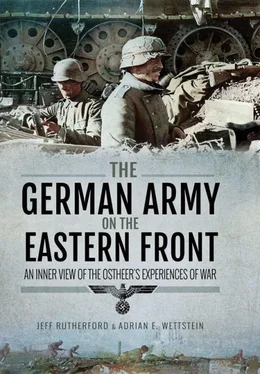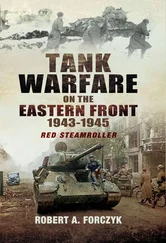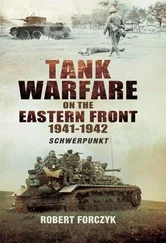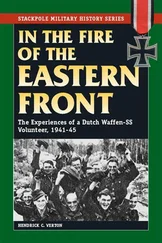I write this to you to illustrate to you once again from a fresh experience the tremendous difficulties which we fight under and know at the same time that these difficulties are known by you as well as all other staff officers [of LVIIth Panzer Corps]. You can rest assured that we also will still do everything to hold the present positions. And what is in some way humanly possible will be done. As it has worked so far, it will again barely work. And when you help us with a delivery of a few NCOs and men, we will somehow hold out as long as necessary until another greater solution is once more due.
By the end of 1943, even elite units (or perhaps especially elite formations due to their frequent use in countering Soviet attacks across the front) were clearly suffering from the infantry crisis that permeated the German army. The heavy and near continuous fighting in the Soviet Union had, to all intents and purposes, decimated and degraded the German army to such an extent that it no longer resembled the institution that had initiated Operation Barbarossa three years previously.
Chapter 2
Command and Leadership in the Ostheer
Significant increase of the supply of trained officers and NCOs. Those officers drawn from all branches and retrained in short courses and those NCOs that are freed in comb-out actions in the homeland do not even meet the lowest demands of a calm positional front. The fighting has shown again that the attack and defence power of the infantry is decisively dependent on the availability of experienced, well trained leaders and NCOs. [1]
German military leadership was one of the key factors, if not the primary one, in the tactical and operational successes of the German Ostheer , even if the latter levels of command increasingly suffered from the interventions of Hitler and the General Staff. German leadership on the ground played an important role in the tremendous gains during the first long year of the war in the east (22 June 1941– end of September 1942), but also in stemming the marked Soviet superiority in men and material for two and a half bloody years. Vital in enduring the already discussed hardships in the east, leadership was important in creating a deep cohesion within units and giving the ordinary soldier an example of officers who endured the same hardships side by side with their men and who generated combat motivation among the ranks. But losses in command personnel were extremely high and the demands of the front could never be satisfied, not even with the infusion of officers from rear units. When the German army suffered its worst defeats in summer 1944, marking the start of the final phase of the war in Europe, the key factor for German success had been severely weakened by three years of attrition.
Military command is too often, even in military history studies, reduced to a few famous generals and their decisions. Of course, men like Fedor von Bock and Erich von Manstein, or Heinz Guderian and Walter Model, are essential to understanding the war in the east. But they were in need of a command staff to implement their decisions, they required lieutenants to fulfil their plans skilfully, sub-leaders on the spot to react adequately to surprising developments and finally communication equipment for transmitting orders and, in turn, to obtain an image of the situation at the front. This chapter will discuss the German ideas about command, such as the famous Auftragstaktik (generally translated as mission command) and see how these were practiced in the campaign against the Soviet Union. Furthermore, it will be discussed how losses in troop leaders were replaced. Finally, three mid-level commanders will be presented to give a face to that command level.
Professional German military understanding of leadership was based on an image of war founded, respectively, by Clausewitz and Moltke the Elder. War was seen as a phenomenon of contingency, in which chaos, coincidence and friction reigned, as well as an arena of moral powers, in which the character of the general and the military spirit of the army were vital factors. To command in the uncertain field of war and battle, virtues such as boldness and tenacity were an absolute necessity for a leader. Only those who had a strong will and an eye for the situation could influence battle by using the elusive chances of the moment. As the modern battle had become very complex, it was not possible for a commander to overview and control all things and actions – decentralizing responsibility of command and initiative were seen as appropriate ways to reduce this complexity. This was accompanied by the conviction that the value of an army depended on the ability of individual soldiers and the initiative of low-level leaders and even enlisted men. Staffs – not an idea of German origin, but strongly emphasized by the German military between the mid-nineteenth century and the Second World War – to support the commanders and thus free them from more technical aspects of command were another path to reduce complexity.
Based on the views and convictions described above, the German military developed over the decades an idea of command that is not easily grasped and which is too often misleadingly termed Auftragstaktik . Mission command is popularly described as a superior ordering a mission, allocating forces and defining boundaries, but then leaving the subordinate free as how to fulfil his mission. By examining German regulations, discussions and training papers, Marco Sigg has shown that mission command was part of German understanding of leadership, but it was embedded in a wider understanding than is often portrayed in the literature. The resulting system of command was founded on seven elements. The key factor – based on the image of war presented above – was a commander’s character, which must include determination, courage, boldness, drive, and willingness to accept responsibility. Closely connected as a second foundation was offensive thinking; attacking would keep the Gesetz des Handelns , or initiative, on one’s own side and thus force the enemy to react to it. Likewise, troops on the offensive were seen as the force possessing the stronger combat morale. Offensive thinking was accompanied by independence, the most controversial part of German command as it included initiative, but this could also develop into arbitrary acts on the part of the commander. A closer look at regulations and training papers reveals that independent action should happen mainly within the framework of a given mission and only against a given mission order in a clearly defined exception, i.e., when the fulfilling of the mission was endangered or an opportunity was seen, but urgent necessity or lack of communication with superior command levels did not allow for consultation. But while this is the very heart of German Auftragstaktik – the leader on the spot decides and possibly even against orders from his superior – training documents indicate that this was viewed as a rare occurrence. The Replacement Army’s Chief of Training Issues noted in a leaflet on command in 1944: ‘Deviate from mission 5%, hold on: 95%.’ [2]Regulating independent action and initiative were the fourth and fifth elements of German command: obedience and discipline, which were important components of the unity of action, or Moltke’s ordre de bataille . The latter meant the coordination and cooperation of arms and branches as a whole. This was achieved by tight command and functioning communication. The ability to judge – the sixth element – describes the creative part of leadership. This included the need to evaluate situations, but also the ability to not be fatalistically locked into any schema in command, such as rigid battle plans. Content was always more important than form. Finally, the German command system included the ‘command process’, which consisted of evaluating the situation, formulating a decision and giving orders. This also included formulating the intention of the commander and the mission for the subordinate. Mission command in the German understanding would only work if these elements were brought together and balanced situationally. To be clear: success was by no means something built into the definition of Auftragstaktik . Many German successes were achieved by arbitrary acts, and German mission command inherently contained the idea of failure, as one of the central German norms was that inactivity was worse than acting incorrectly. Such a complex model of leadership could only work with leaders well trained and educated to follow intuitively the norms and values inherent to the system.
Читать дальше






![John Stieber - Against the Odds - Survival on the Russian Front 1944-1945 [2nd Edition]](/books/405234/john-stieber-against-the-odds-survival-on-the-russian-front-1944-1945-2nd-edition-thumb.webp)





